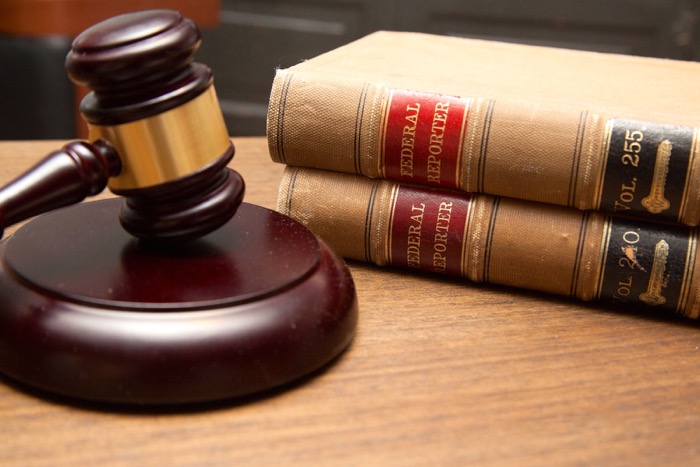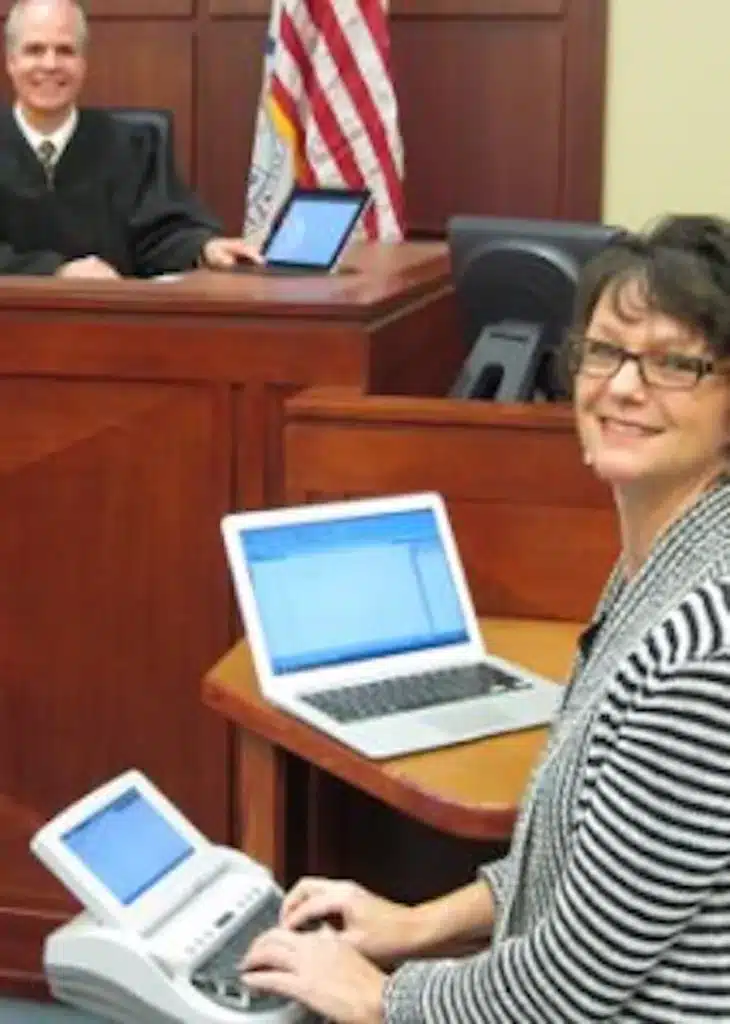How durham court reporting contributes to courtroom transparency and accountability
How Court Reporting Works: A Step-by-Step Guide to the Legal Process
Court reporting is an important component of the lawful system. It includes an organized process that ensures exact paperwork of procedures. From preparation to the last delivery of transcripts, each step is crucial. Recognizing exactly how stenotype reporter run offers understanding into the stability of lawful records. The subtleties of their job can greatly influence lawful end results, prompting concerns about the technologies and approaches they use. What are the specific strategies that define this occupation?
The Duty of Court Reporters in the Legal System
Court press reporters play a necessary function in the legal system by providing dependable and accurate records of court procedures. Their work guarantees that every spoken word throughout hearings, depositions, and tests is recorded, which is important for maintaining an official document of events. This transcription is fundamental for allures, as it permits greater courts to review the proceedings and identify if any mistakes were made during the test.
In addition, stenotype reporter help in protecting the honesty of the legal process by producing verbatim records that can be described by attorneys, courts, and various other parties associated with a situation. They frequently use specific equipment and software program to catch discussion with precision. Beyond the court room, their records can work as important historic documents, using insight into judicial process and the lawful system's performance. Ultimately, stenotype reporter add significantly to openness and accountability in legal matters.
Getting ready for a Court Reporting Session
Prep work is essential for an effective court reporting session, as it assures the precision and performance of the transcription process. Stenotype reporter start by reviewing case materials, including pleadings and witness listings, to familiarize themselves with the terms and context. They also make particular that they have the required tools, such as steno makers, notebooks, and back-up devices, ready for use.
Prior to the session, communication with lawful teams is vital. Press reporters frequently clarify any kind of specific requests pertaining to formatting or preferred terms. In addition, they might organize to satisfy with lawyers or witnesses to review the procedures and confirm the schedule. Showing up very early to set up the devices enables repairing potential technological concerns. Generally, complete prep work not just boosts the press reporter's self-confidence however additionally adds considerably to producing a clear and precise record of the legal procedures.

Catching the Document: Techniques and Tools
Making use of sophisticated methods and reputable tools, stenotype reporter thoroughly catch the talked word during lawful process. They use stenography, an approach involving a specialized maker that enables them to type multiple sounds concurrently, thus recording dialogue in genuine time. This maker, called a steno keyboard, is furnished with keys that stand for words and syllables, allowing swift and precise input.
Along with stenography, stenotype reporter might make use of audio recording devices as supplementary tools. These tools work as back-ups, making certain that no important details is shed during procedures. Some reporters incorporate software program that improves their transcription effectiveness, offering features such as voice acknowledgment and automated formatting.
Appropriate positioning and emphasis are critical; press reporters have to preserve interest on all audio speakers, recording nuances and inflections that add to the record. With a mix of ability and technology, court reporters copyright the honesty of the lawful process by guaranteeing a extensive and exact record of events.
Recording the Procedures
Recording the process calls for stenotype reporter to transform talked dialogue right into written text with outstanding accuracy and speed. This process normally takes place promptly after the recording has been recorded, making use of specialized software program that enables seamless transcription. Stenotype reporter have to listen diligently to the audio, guaranteeing that every inflection, word, and pause is properly represented in the transcript.
They frequently rely upon shorthand systems, personal transcription skills, and advanced technology to promote this job. The environment in which they function can be hectic and in some cases disorderly, as lawful proceedings typically include numerous speakers and technological jargon. Stenotype reporter have to likewise keep focus to catch nuances in tone and context that may be essential for the lawful record. Ultimately, the accuracy of the transcription is important, as it works as an official record for future reference in lawful process.
Modifying the records and examining
The process of examining and modifying the transcript is essential for guaranteeing precision in court reporting. Stenotype reporter frequently work together with attorneys to clarify any kind of ambiguities and confirm the accuracy of the tape-recorded declarations. This partnership is important for keeping the honesty of the lawful record.
Significance of Precision
Precision functions as the keystone of efficient court reporting, as also minor mistakes can greatly change the definition of legal proceedings. The assessing and editing and enhancing process is important in making sure that transcripts show the spoken word with integrity. Court reporters meticulously validate names, technological terms, and legal jargon to maintain precision. This interest to detail assists stop misconceptions that could affect situation end results. Moreover, precision cultivates trust among legal specialists, clients, and the court, reinforcing the stability of the judicial system. Mistakes can result in appeals or conflicts, making it necessary for reporters to improve their work extensively. Eventually, the pursuit of accuracy not just improves the integrity of the records however also promotes the criteria of the lawful career.
Partnership With Lawyers
Collaboration in between court press reporters and lawyers is critical during the assessing and modifying phase of records production. This procedure assures that the final record properly mirrors the talked word and complies with lawful standards. Attorneys typically review records for particular terminology, context, and any prospective mistakes that could impact the situation. Court press reporters depend on attorneys' competence to clear up ambiguous areas Website or emphasize essential declarations. Reliable communication is crucial; lawyers may offer comments or request improvements, which stenotype reporter have to deal with without delay. This collaboration not only improves the top quality of the records however also adds to a smoother legal process. Inevitably, collaborative initiatives bring about a specific and dependable record, important for lawful proceedings and future recommendations.
Delivering the Final Transcript to Clients
Upon conclusion of the transcription process, court press reporters thoroughly prepare the final file for delivery to their customers. This last transcript undertakes complete checking to guarantee precision, as any type of errors could greatly influence lawful process. Stenotype reporter layout the paper according to the certain requirements stated by the clients or legal firms, including pagination, indexing, and any type of essential exhibits.

Ultimately, stenotype reporter might provide a cover letter summarizing crucial details and supplying further assistance if needed. This comprehensive method guarantees that clients receive a polished, exact, and conveniently accessible transcript, important for their legal demands.
Often Asked Concerns
What Credentials Are Needed to Become a Court Press Reporter?
To end up being a court reporter, people usually need a high school diploma, completion of a court reporting program, and certification or licensure, depending upon state requirements. durham court reporting. Efficiency in shorthand and technology is likewise essential for success
How much time Does It Take to Total Court Reporting Training?
Commonly, finishing court reporting training takes between 18 months to 4 years, depending upon the program's strength, the student's rate, and the specific demands find more info of the territory in which they wish to exercise.

What Is the Typical Wage of a Stenotype Reporter?
The average wage of a stenotype reporter varies by location and experience, commonly ranging from $45,000 to $100,000 annually (durham court reporting). Variables such as field of expertise and demand can considerably influence their earnings in different areas
Are Court Reporters Required to Have Certification?
Stenotype reporter are commonly called for to acquire qualification, which assures they have the essential skills and knowledge for accurate transcription. Certification needs can differ by state or jurisdiction, mirroring professional criteria within the lawful community.
Can Court Reporters Work From Another Location or Freelance?
Stenotype reporter can function remotely or freelance, giving versatility in their profession. Many utilize modern technology to record process from various locations, permitting diverse opportunities in the lawful field while keeping a work-life equilibrium.
Court reporters play a necessary duty in the lawful system by supplying dependable and accurate records of court process. Furthermore, court press reporters help in preserving the integrity of the lawful procedure by producing verbatim records that can be referred to by Our site attorneys, courts, and other events involved in a situation. Making use of innovative strategies and reputable tools, court reporters thoroughly capture the spoken word throughout legal procedures. Court reporters have to likewise keep focus to capture nuances in tone and context that may be vital for the legal document. To come to be a court reporter, individuals typically require a high college diploma, completion of a court reporting program, and certification or licensure, depending on state demands.